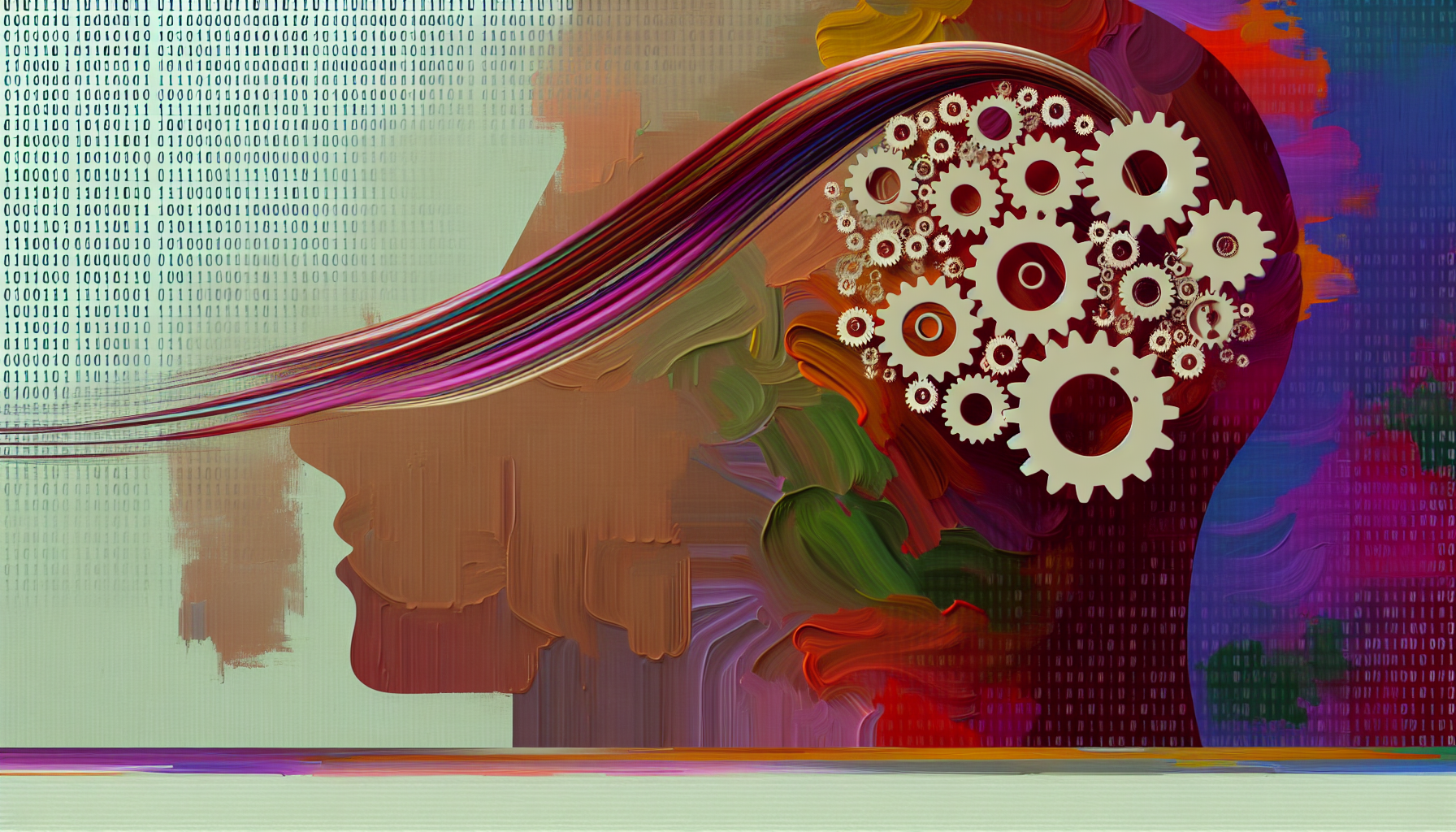In the ever-evolving conversation about artificial intelligence, a fascinating frontier is the exploration of AI art and creativity. We wander not just along the avenues of algorithmic generation, but amidst the deeper inquiries: Can machines transcend their technical constraints to achieve true artistic expression? In the human domain, creativity is often revered as a pinnacle of our intellectual and emotional faculties. But what happens when machines attempt to step onto this artistic stage? Let’s delve into this artistic odyssey where silicon meets soul, pixels meet paint, and code encounters the canvas.
The Mechanics of Machine Creativity
When we discuss machine-made art, we are essentially talking about algorithms with brushes. The process typically starts with heaps of data fed into neural networks – sophisticated programs designed to mimic the human brain’s analytical capacity. These networks learn styles, techniques, and sometimes even artistic philosophies by analyzing artworks, identifying patterns, and generating new outputs. It’s akin to a toddler scribbling with crayons after being shown a Picasso.
But let’s not be too quick to ask these digital darlings to hold an exhibit at the Louvre. One must ponder whether AI can truly innovate or if it simply repackages known styles and techniques. At its core, AI lacks emotion, experience, and subjective interpretation – those messy, deeply human ingredients that fuel our creative expression. Can art devoid of angst, joy, or existential dread hold the same weight?
Transcending the Technical
Yet, there’s a peculiar beauty to this machine-generated art. It’s a beauty derived from sheer algorithmic audacity, exploring realms of aesthetics that might escape the conscious human mind. Consider the AI-generated artwork “Portrait of Edmond de Belamy,” which fetched a ballpark figure of $432,500 at a 2018 auction. This piece was developed by a program designed by the Paris-based arts collective, Obvious. Here’s where a wry smile plays upon our lips: are the collectors buying art, or just enjoying an expensive, avant-garde joke on technological progress? Perhaps it’s a bit of both.
For a moment, take a philosophical leap with me. If limitations define form, does technology’s constraint not grant it a unique lens through which to perceive the world? In the rigidity of machine logic, there can arise an accidental transcendence, an unexpected avenue toward artistic brilliance. Depth, meaning, and emotional resonance aren’t requirements of art; our reactions imbue these elements onto the work, creating an interactive dance with creativity itself.
Art for Whom? The Kantian Quandary
This brings us to the question of intent and audience. Immanuel Kant, with all his categorical imperatives, might raise an eyebrow at machine art. For Kant, true art was synthesized through free will, aimed toward beauty as an end in itself, not merely a means. Can the mechanized brushstrokes of an AI, absent of intent, align with Kantian ideals of artistry? It’s like asking your toaster to ponder Nietzsche.
Nonetheless, here’s where AI art finds its sparkle: through the reflection and interpretation of the human audience. We bring the intent; we assign value and meaning where the machine cannot. The Kantian bridge may well be built on the shared experience between the viewer and the algorithm-driven art piece, rather than on the artist’s subjective intent.
The Collaboration Conundrum
Interestingly, the world may not have to choose between the binary of human vs. machine. Collaborative art, a symbiosis of human creativity and machine capability, heralds a broader definition of artistic expression. Artists and programmers alike collaborate, using AI tools not as creators but as co-conspirators in their artistic endeavors, translating abstract thought into canvases of evolved complexity.
A simple twist of humor rests here: anxious artists might wonder if they must update their résumés, listing AI as their avant-garde assistant or co-artist. “Fluent in Photoshop, acrylics, and Python,” they’ll scribble as they navigate this new art world.
The Soul of Art in the Age of AI
So, can machines transcend their constraints to achieve true artistic expression? Perhaps the answer lies not within the algorithms but in the beholder’s eye. We, the viewers, maintain our agency by engaging with AI-generated art, interpreting it, and infusing it with significance. In this shared space, art lives not solely within the skills of its creators but in the infinite kaleidoscope of perspectives it provokes.
Ultimately, the existence of AI art challenges us to redefine creativity. As the curtain rises on this evolving theater of machine imagination and artistic expression, we’re called not to dismiss these AI endeavors but to explore what it means for art to be meaningful in a digital, data-driven world. And in doing so, who knows, maybe the AI will learn to appreciate our scribbles as well.
In the dance of pixels and pigments, there’s always room for grace, growth, and perhaps just a bit of good-natured chuckling at what the future holds.

Leave a Reply